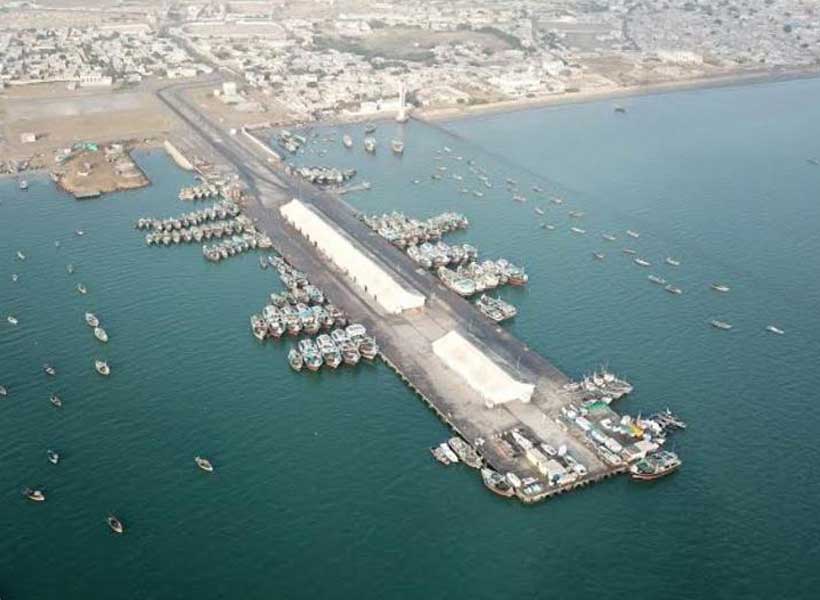Officially agreed to by the two governments in 2015, CPEC is a flagship project of China’s Belt and Road Initiative (BRI). Spanning over 3,000 kilometres, it strategically links and creates a vital trade route from China’s Xinjiang Autonomous Uyghur Region (Xinjiang) to Pakistan’s Arabian Sea ports, including Gwadar, Port Qasim, and Karachi.
Aiming to enhance trade, investment, economic cooperation, and regional connectivity, the US$65 billion project includes highways, railways, pipelines, energy infrastructure, and industrial zones.
Chinese media report that under CPEC Phase I, China and Pakistan have so far completed 38 projects (US$25.2 billion). An additional 26 projects (US$26.8 billion), are in the pipeline, with many included in CPEC Phase II.
The strategic deepwater Gwadar port, located on Pakistan’s southwestern coast, is central to CPEC and China’s broader BRI. Intended as a deep-sea port that could serve as a major transshipment hub linking South Asia to global markets by serving as a gateway to Africa, the Middle East, and Central Asia, the port is operational but has not yet attracted significant economic activity. Similarly, the New Gwadar International Airport, though completed, has not been inaugurated due to ongoing security concerns.
Nonetheless, the completion of these infrastructure projects highlights Pakistan’s potential as a critical transit hub for regional trade and connectivity. According to Chinese state media Global Times, challenges will not deter Beijing and Islamabad from working together on the CPEC project,
For Islamabad, CPEC plays a role in Pakistan’s economic development plans through infrastructure, energy production, and regional trade integration. As part of its broader economic strategy, Pakistan is prioritising transport infrastructure, industrial growth, and the strategic development of Gwadar port, while also focusing on agricultural modernisation.
CPEC projects, including energy initiatives such as coal, solar, and wind power plants, aim to address Pakistan’s chronic energy shortages and create jobs. By enhancing infrastructure, CPEC could improve bilateral trade and deeper economic integration with the broader South Asian region, thereby addressing Pakistan’s continued economic crisis.
The project benefits Beijing too. It helps China advance its geopolitical and geoeconomic ambitions in and project power across South Asia, the Indo-Pacific, and the Indian Ocean, while also countering U.S. influence in these regions. It provides Beijing with access to the Indian Ocean, Arabian Sea, and Persian Gulf region, vital for energy imports and trade.
The project faces major challenges. Aside from concerns over environmental impacts, Pakistani domestic politics, and social discontent over the corridor favouring Beijing, other challenges remain.
A major issue is the financing of CPEC. Critics argue that Pakistan’s financial struggles, political turmoil, and regional instability have deterred further Chinese investment.
Debt sustainability is another pressing concern. Pakistan has taken on substantial loans to fund infrastructure projects, making China the country’s largest external creditor. Estimates from the International Monetary Fund suggest that 30 percent of Pakistan’s US$100 billion external debt is owed to China. With interest rates averaging 3.7 percent, according to one estimate, this complicates Pakistan’s debt management.
China’s loans have faced increasing scrutiny for exacerbating Pakistan’s debt burden, sparking accusations of “debt trap diplomacy.” Critics argue that these loan agreements, which heavily favour China, give Beijing financial leverage over countries unable to repay their debts. This concern is not limited to Pakistan, with other BRI countries and potential partners also wary of becoming financially dependent on China.
Washington has criticised China’s lending practices, arguing they benefit Beijing while burdening Pakistan with an unsustainable debt load, also raising concerns that Chinese investment could be used for coercive leverage.
Both China and Pakistan have refuted these claims. Other research also suggests that the “debt-trap diplomacy” narrative is a myth.
India remains concerned by Beijing’s influence in Pakistan, viewing it as part of broader efforts to expand China’s reach across South Asia while also challenging New Delhi’s influence in South Asia and beyond. New Delhi opposes CPEC, citing sovereignty and security issues, particularly as the corridor passes through the disputed area of Kashmir (claimed by India but administered by Pakistan).
In response, India has strengthened connectivity with neighbouring countries and within South Asia, voicing concerns over China’s increasing influence. New Delhi is also pursuing alternative projects, notably the Chabahar Port in Iran, which provides a trade route to Afghanistan and Central Asia, bypassing Pakistan. The International North-South Transport Corridor linked to Chabahar similarly aims to offer an alternative to the BRI in the region.
Security risks are a major challenge for CPEC, particularly in volatile regions like Balochistan, where insurgent violence is persistent. Attacks on infrastructure and personnel, including Chinese workers, are common, leading to project delays and higher costs. The Baloch Liberation Army (BLA), a separatist group seeking Balochistan’s independence, has claimed responsibility for many of these attacks.
The BLA and other separatist groups argue that China-Pakistan ties have exploited Balochistan’s resources without benefiting the local population, fuelling resentment and further violence.
In response, Beijing has urged Islamabad to protect Chinese workers. At a recent meeting between Chinese President Xi Jinping, Pakistan’s prime minister, and army chief, security was the “foremost topic”. Beijing has since ramped up diplomatic pressure on Islamabad warning that it jeopardises China’s investments in Pakistan.
Pakistan has taken measures to counter the BLA, with some in coordination with China. Yet concerns about the effectiveness of these efforts persist.
CPEC represents a significant step towards regional integration and economic growth, with the potential to reshape the geopolitical landscape of Asia. Its long-term success, however, will depend on the effective management, political stability, and addressing concerns of all stakeholders involved.
